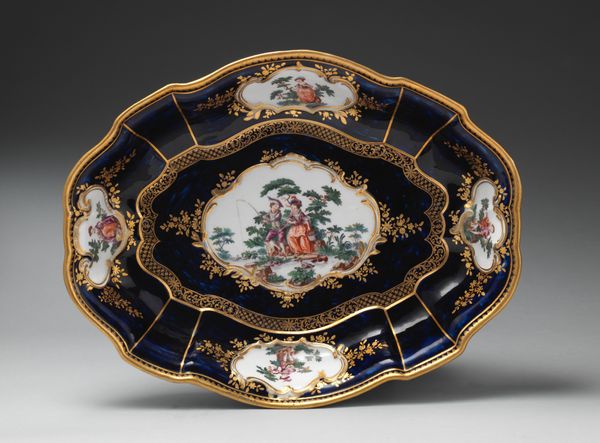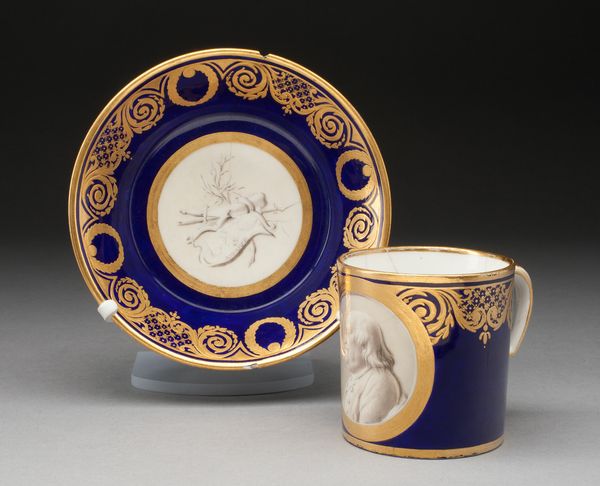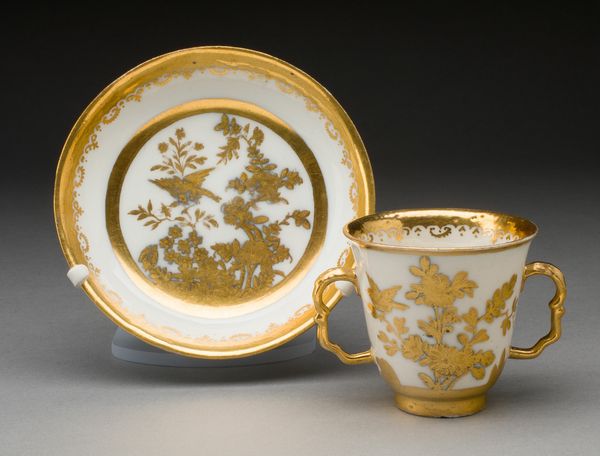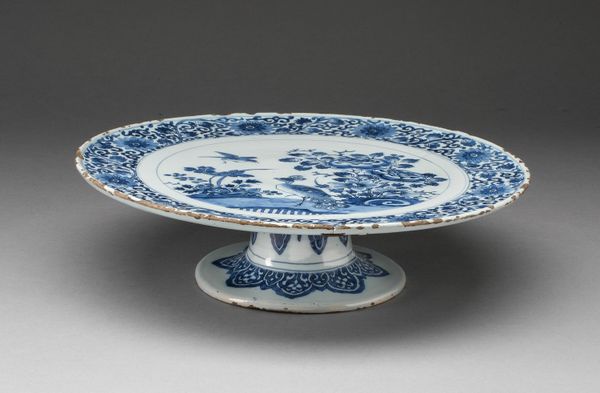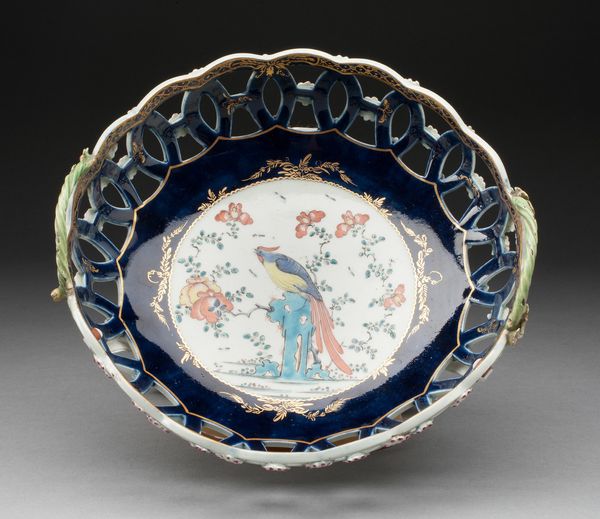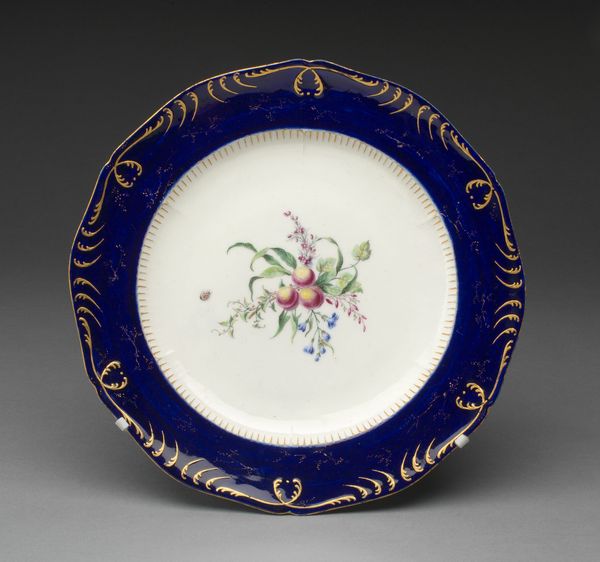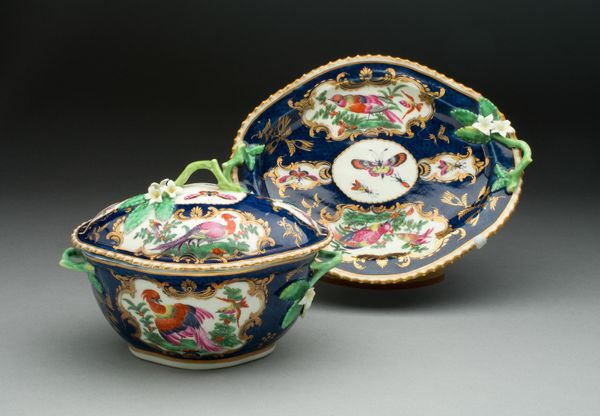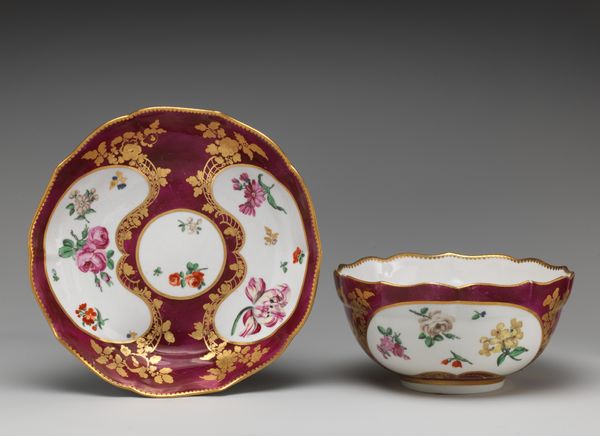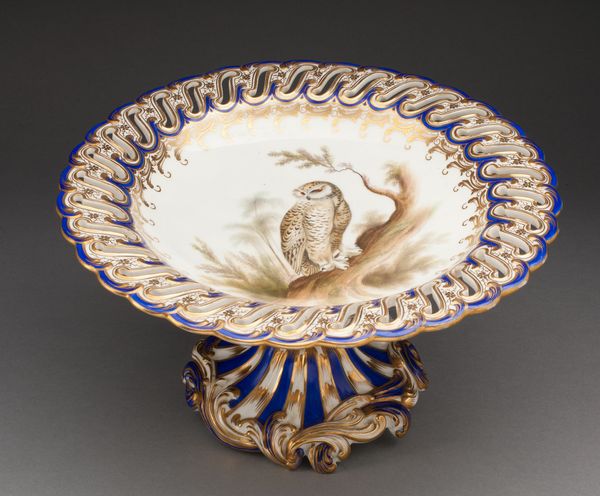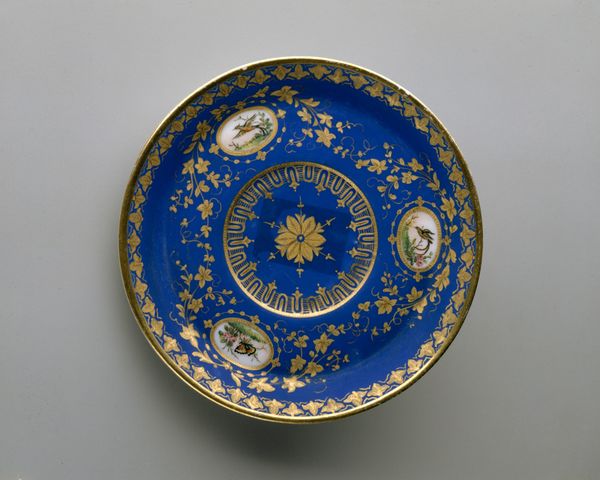
ceramic, porcelain
#
ceramic
#
porcelain
#
ceramic
#
decorative-art
#
rococo
Dimensions: 13 × 20.5 × 26 cm (5 1/8 × 8 1/16 × 10 1/4 in.)
Copyright: Public Domain
Curator: Here we have a sugar bowl and stand created around 1753 by the Manufacture de porcelaine de Vincennes, a superb example of Rococo design. Editor: The cobalt blue and gilt detailing certainly grab your attention. There is a lighthearted quality, with the gilded birds scattered across the pure white reserve against this intense blue, almost an exuberant display of wealth. Curator: The cobalt blue, known as bleu lapis, was developed around 1752. The decoration of birds amongst gilded foliage, termed 'oiseaux', became quite popular for a time at Vincennes, demonstrating a masterful handling of the porcelain material. Editor: Absolutely. The symmetry, though present, feels secondary to the decorative dynamism. I find it telling that this sugar bowl would likely have sat at the center of complex social rituals and that this object speaks of aristocratic and bourgeois culture of conspicuous consumption. Curator: The specific choices—the vivid blue contrasting the pure white, and the soft curves—creates visual harmony and embodies Rococo aesthetics. Beyond pure decoration, this piece has significance on understanding trade relations and patterns of elite collecting. Editor: The gilding technique enhances the feeling of luxury; light would have danced across the surface. The form and decoration signal class distinctions. How intriguing to think about who owned this, where it sat, and its purpose. The birds themselves – were they meant to symbolise freedom, exotic travel perhaps? Curator: Potentially so. Birds also featured prominently in the paintings of the era, for example, often symbolizing beauty and capturing the essence of Rococo artistic expression through both material and motif. Editor: This examination has brought into relief how artworks, beyond formal considerations, can unveil social structures and aspirations. Curator: Indeed. Close study reminds us how design choices in structure and aesthetic elements offer glimpses into history.
Comments
No comments
Be the first to comment and join the conversation on the ultimate creative platform.
